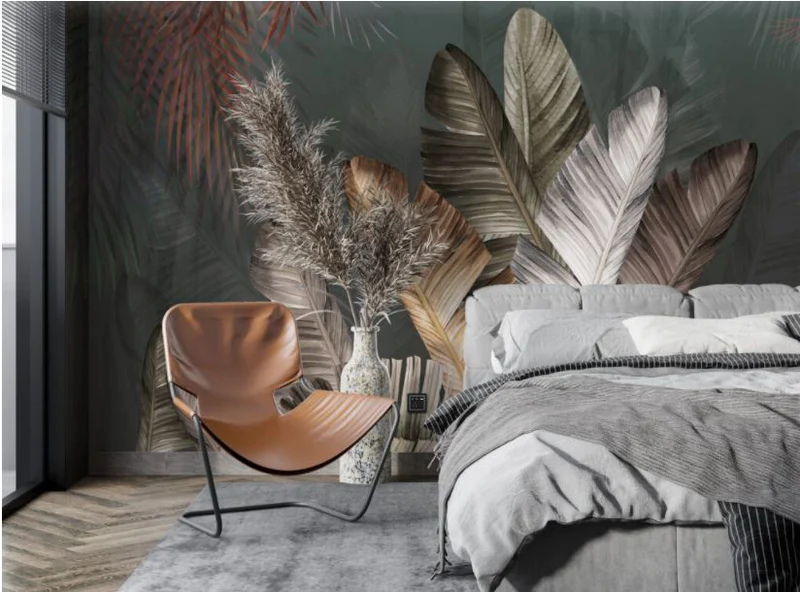Wallpaper is a paper-based material, usually mounted on a backing system, that adheres to most interior walls as a decorative coating. It is commonly prepared by applying wallpaper paste or compound to a prepared surface, allowing it to dry, and then removing it from the sheet with water-moistened hands; this process replicates traditional hand-applied wallpapers. Self-adhesive wallpaper is known as a ‘wet’ or ‘semi-permanent’ type of wallpaper that, when applied to the wall, will adhere to it and can be removed using water.
Wallpaper should always be applied carefully and correctly. It can create beautiful designs in your home, but not carefully misusing it can damage your walls! So please take care when buying self-adhesive wallpaper.
Origin
Wallpaper has been around for thousands of years. It originated from papyrus and other natural fibres used since ancient times. The ancient Egyptians first used it for covering walls.
Self-adhesive wallpaper is an adhesive-backed wallpaper material that can be cut to size.
It is not a type of wallpaper; instead, it’s one type of adhesive-backed wallpaper material. The wall’s surface has been prepared with a special paste, and then once this has dried, you can apply your self-adhesive paper with ease!
There are many advantages to using self-adhesive over traditional methods:
- You don’t have to worry about getting it wrong; if you make any mistakes or mess up on your first attempt, remove some and start again – no need for messy removals!
- You don’t need glue or tools like scissors or knives – peel off the backing paper after application and stick it onto your chosen surface!
Wallpaper is mainly applied through an adhesive.
Wallpaper is applied to the wall through an adhesive affixing itself to its surface. This process works by placing a layer of wallpaper over your painted or stained walls, followed by another layer of paper that grips onto your paint or stain.
Wallpaper can be applied in many different ways:
- Spray-on wallpaper – this type requires no tools and doesn’t require any preparation before application. Shake off any excess mist from its container and apply it as directed!
- Rolled-up paper – if you have time on your hands and don’t mind getting messy (or maybe even wet), rolled-up paper is where it’s at! This method involves first soaking up the water with towels so that all surfaces are damp enough for this adhesive bond (it works better when wet). Then roll out some fresh sheets onto a clean surface like wood panelling board or cardboard boxes until they reach about 8 inches wide; press firmly into place using heavy objects such as bricks until they stick firmly together without bubbles showing through anywhere underneath—this should take no longer than five minutes per sheet depending upon how much extra space is left around edges after cutting out larger shapes etcetera.
Keep in mind:
Self-adhesive paper is applied to the wall through an adhesive that affixes itself to the wall’s surface. It comes in various colours, patterns, and textures, making it suitable for any room in your home.
Please note that you should only use self-adhesive wallpaper on a smooth, clean, non-textured “white” painted wall when no other type of wallpaper is to be used on the same division.
You need always follow the manufacturer’s instructions when using self-adhesive paper.
- Follow the manufacturer’s instructions.
- Read the instructions before you start.
- Use a ruler to measure the wall and a level to check that it’s straight.
- Use a utility knife to cut the wallpaper, and apply it with a brush if necessary.

